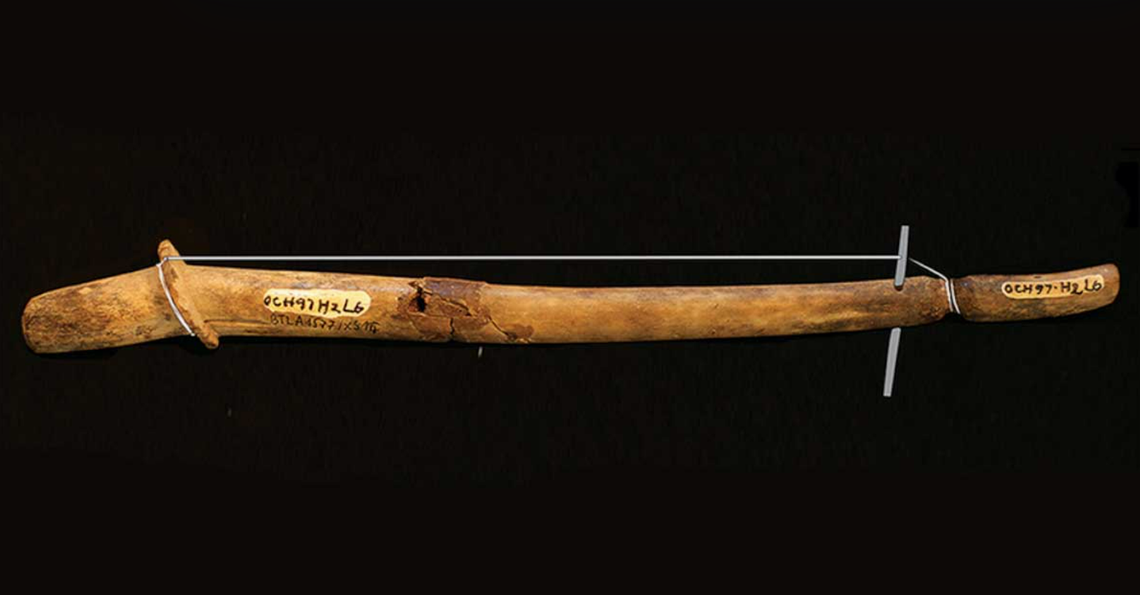
When two deer antlers were excavated in Vietnam in the 1990s, they were thought at that time to be no more than unusual, if well-preserved, artifacts. But after languishing in museum storage for decades, the objects have now been found to represent something far rarer—not just the oldest animal bones to be found in Southeast Asia, but the earliest-known stringed instruments to be unearthed in the region.
Measuring about 13.7 inches long, the antlers are believed to have come from a Sambar deer or an Indian hog deer species native to mainland Southeast Asia. They date back at least 2,000 years to the pre-Óc Eo culture, which thrived between the 2nd century B.C.E and 12th century C.E. in the Mekong Delta.
After their unearthing at the Go O Chua site along the Mekong River, the antlers were sent to the Long An Museum in southern Vietnam, where they sat in storage until a visit by archaeologists from the Australian National University. Led by Fredeliza Campos, the team examined the objects in 2012 and 2016, concluding that they were in fact single-stringed musical instruments.
Detail of one of the antlers showing the “perfectly round hole” and grooves. Photo: Antiquity (2023). DOI: 10.15184/aqy.2022.170
In a study just published in Antiquity, the researchers point to the “perfectly round hole” at the end of one antler, perhaps intended for a peg which could be used to tune a string, and a polished bridge to support such a string. The other antler, though broken, had evidence of grooves where a taut string might have once been attached.
After conducting further ethnographic studies, the team now believes the artifacts to be early chordophones, a class of stringed instruments, encompassing zithers and monochords, which have played vital roles in the country’s millennia-old court and traditional musical practices.
“No other explanation for its use makes sense,” Campos said in a statement.
A comparison of the reconstruction chordophone (A) with other musical instruments in Vietnam, including the Bro JoRai (B), the Co Ke (C), and K’ny (D). Photo: Antiquity (2023). DOI: 10.15184/aqy.2022.170
Ancient chordophones would be played by musicians sitting on the floor, drawing a bow across the instruments’ tightened strings. According to the researchers, a primitive resonator may have also been used to amplify the musical effects.
The find is all the more remarkable as musical traditions, quite unlike material culture, aren’t so easily excavated. The newly discovered chordophone, added Campos, “fills the gap between the region’s earliest known musical instruments—lithophones or stone percussion plates—and more modern instruments.”
In particular, the researchers highlight how these ancient chordophones bear similarities to the modern-day K’ný. Like the chordophone, it is a one-stringed instrument, crafted out of bamboo and played with a bow, with a plate that allows players to modulate the sounds and tones with their mouths.
“The striking similarities between the artifacts we studied and some stringed instruments that are still being played,” said Campos, “suggest that traditional Vietnamese music has its origins in the prehistoric past.”